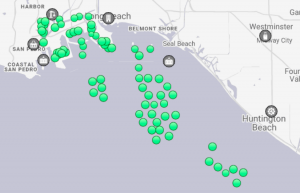World Trade Center San Diego updates 2015 regional plan amid pandemic
Today, alongside Congressman Scott Peters, San Diego Mayor Todd Gloria and key regional business leaders and in partnership with the Center for Commerce and Diplomacy at UC San Diego, World Trade Center San Diego (WTCSD) released its “Go Global 2025: San Diego’s Global Trade and Investment Initiative.” This regional strategic plan serves as the update to the inaugural strategy launched in 2015 and focuses on global engagement as an engine for recovery and resilience.
Available on web at goglobal2025.wtcsd.org, the strategic plan also includes an overview of San Diego’s economic and policy landscape, an interactive foreign investment map, perspectives from executives of global firms and more.
THE CASE FOR GLOBAL ENGAGEMENT
As the world collectively battles a pandemic and navigates resulting economic shutdowns, the global economy faces some of the most significant disruptions in a generation. Nations and cities have begun to look inward to focus on domestic needs including healthcare, education, infrastructure, equity and job creation. And yet, if this year has taught us anything, it is that we are a global society that is inextricably connected.
On the road to recovery, it is increasingly important for leaders at the metro level to articulate a compelling, data-driven vision of our place within the global economy and collaboratively execute a strategy that keeps us ahead of the curve.
“San Diego is filled with world-class innovation and smart people solving global problems. Now is the time for our big, binational City to show up on the world stage to help us reach our goals faster,” said Mayor Todd Gloria. “As Mayor, I want to tell that story in a way that opens doors and enables more investment, jobs and opportunities for San Diegans and moves our city forward.”
While San Diego exports $22 billion in goods annually, the region is also a top 10 services exporter among U.S. metros. The region’s competitive advantage is in professional, scientific, and technical services, like research and development, cybersecurity, and engineering and software. These industries also capture the highest concentration of foreign direct investment (FDI) via mergers and acquisitions and venture capital investment. In fact, San Diego life sciences firms captured nearly three-quarters of the estimated $3 billion in foreign investment injected into the regional economy last year.
“As the “next normal” takes shape, San Diego needs to continue to prepare for where the economy is going by focusing on our most globally competitive industries. However, we need to be intentional about creating quality jobs at every skill level within those industries, and enabling San Diegans with the tools they need to fill those jobs,” said Nikia Clarke, Executive Director, WTCSD. “This will ensure that our businesses and innovators continue to export life-changing technology, and it will also make all our communities more resilient to future shocks.”
A STRATEGIC PLAN
In order to drive quality job growth through expanding foreign investment and exports, deepen economic ties to strategic markets, and enhance the region’s reputation to drive competitiveness, WTCSD proposes five key strategies for the San Diego region:
- Lead with the region’s most competitive industries. Most growth and job creation will come from innovation–based industries.
- Leverage binational assets to attract foreign investment. Capture investment along the entire value chain in priority industries.
- Prioritize market access for small businesses. Small businesses create the most jobs but face higher barriers to internationalization.
- Invest in critical infrastructure that enables global commerce. Modernize, maintain and expand service through international ports of entry.
- Enhance San Diego’s global identity and reputation for innovation. Deepen public-private partnerships on focused international activity.
“The digital paradigm shift we’ve seen is just one of the many ways the global marketplace—and in turn, our business—has been revolutionized by the pandemic. This is why a regional strategic plan like the one WTCSD has outlined matters: there are real businesses, real people, real jobs who require the resilience that global connection provides,” said Ken Behan, VP of Sales and Marketing, SYSTRAN.
“The Port of San Diego is a vital economic engine for the region with San Diego Bay and the surrounding waterfront at the heart of it all. While it has been a difficult and uncertain year for us and many of our bayfront businesses, there are so many legacy-making decisions ahead. This strategy presents an opportunity for us to align not only in word, but in action. The impacts could be transformational,” said Commissioner Jennifer LeSar, Port of San Diego Board of Port Commissioners.
The report was produced by WTCSD, with support by the Center for Commerce and Diplomacy at UC San Diego and sponsored by Illumina. It was unveiled today at a community event alongside Congressman Scott Peters; San Diego Mayor Todd Gloria; Dr. Renee Bowen, Director, Center for Commerce and Diplomacy, UC San Diego; Garry Ridge, Chairman of the Board & CEO, WD-40; Kathleen Lynch, Vice President, Global Government Affairs & Public Policy, Illumina; Maritza Diaz, CEO, iTjuana; and Dr. Vivek Lall, Chief Executive, General Atomics Global.
ABOUT WTCSD
Founded in 1994 by the City of San Diego, Port of San Diego, and San Diego International Airport, World Trade Center San Diego (WTCSD) operates as an affiliate of San Diego Regional EDC. WTCSD works to further San Diego’s global competitiveness by building an export pipeline, attracting and retaining foreign investment and increasing San Diego’s global profile abroad. sandiegobusiness.org/wtcsd
Read the full strategy and report here

